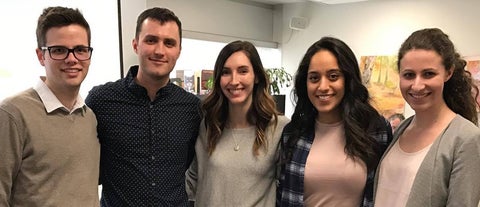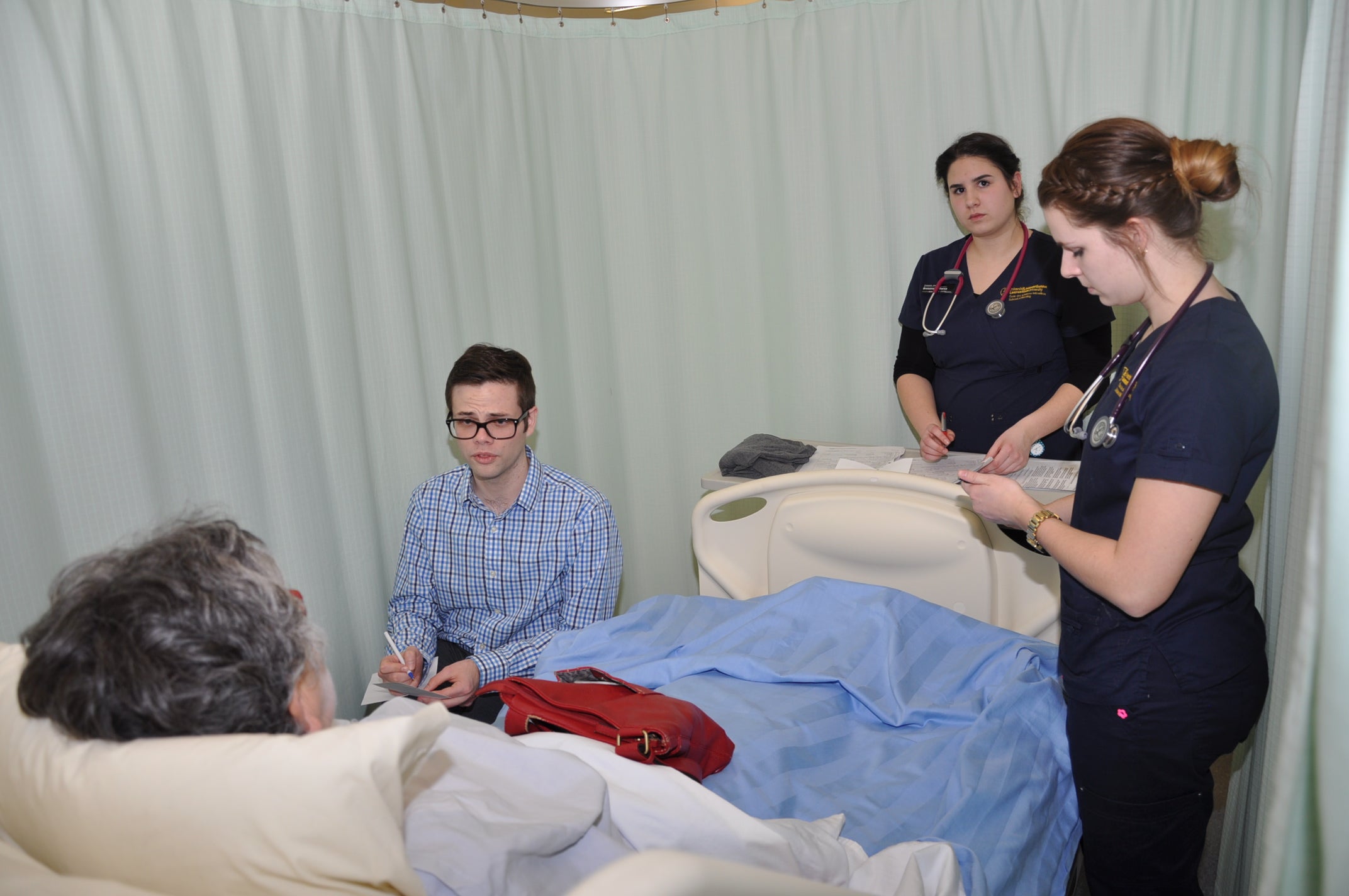
Rx2019 Blake Houle and the Rx2017 students on rotation in Sudbury - Matthew Filipovic, Jillian Belanger, Tayyaba Mawani and Monique Eisa.
Health Sciences North (HSN) is one of the largest hospitals in northern Ontario. For Blake Houle, a second year pharmacy student who’d never worked in a hospital before, a work term at HSN was an exciting prospect.
“I have several years of experience in community pharmacies, so I wanted something different,” says Houle. “In community, you’re usually with one or two pharmacists, meeting a lot of demands with a small amount of information. I didn’t realize how limiting that was until working in hospital, where you have a whole staff of pharmacists and access to lots of information.”
Houle was a member of the anticoagulation clinic – a clinic dedicated to providing services for patients on or starting medications to help them manage blood clotting.

“It’s a specialty aimed at helping patients transition back into the community. When a patient is referred, we’d meet with them and talk for between 45 minutes and an hour. The goal is to help patients understand the risks of bleeding and clotting and to give them options about medications.”
Houle worked with a pharmacist when meeting with patients and also conducted follow-up calls to ensure that medication therapy was going well.
He also made sure to keep busy when he wasn’t in the clinic. Houle volunteered at a cancer lodge and also collaborated with the other pharmacy students in the area.
“I worked with the other pharmacy students to develop and run an outreach program at a Sudbury high school,” he explains. “We addressed a timely issue – substance abuse and opioids – and talked to high school students about the risks involved and the services pharmacists can provide. You could tell by the students’ faces that our information had an impact.”
As one of only a few pharmacy students working in Sudbury, Houle had many opportunities to collaborate. Kaitlin Bynkoski, the Regional Clinical Coordinator who manages Waterloo Pharmacy’s clinical rotations program in Sudbury, coordinated several activities for students in the area.
“Every Friday the pharmacy students would get together to present and discuss cases we came across during the week. It was fantastic that I got to use knowledge from IPFC 1 in the anticoagulation clinic. Being able to apply what I’d just learned reinforced that learning in a practical way.”

Houle was also the only pharmacy student to participate in an event run by the Northern Ontario School of Medicine. The event brought together medicine, nursing, radiation technology, and pharmacy students and explored health programming options for youth in the community.
Working in a more remote part of the province meant that both in and out of the hospital, Houle had opportunities to explore all the different roles pharmacists can play: interprofessional team member, patient-counsellor, community educator.
“I went into this co-op hoping it would solidify what I wanted in a career,” he says. “And I could see myself working in hospital. But more than anything, my work term showed me just how many options pharmacists have.”